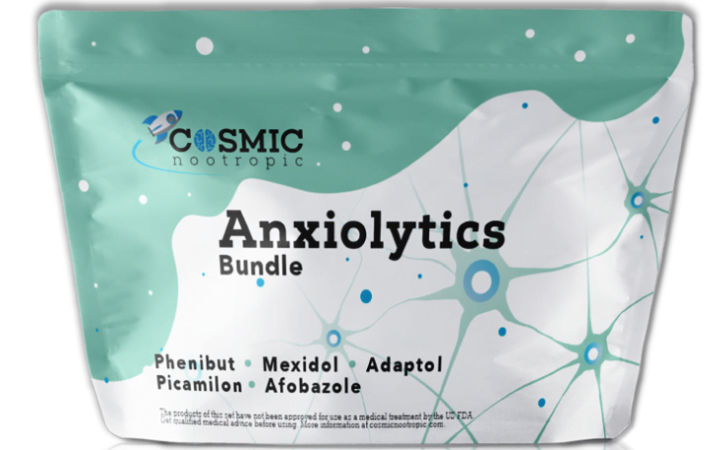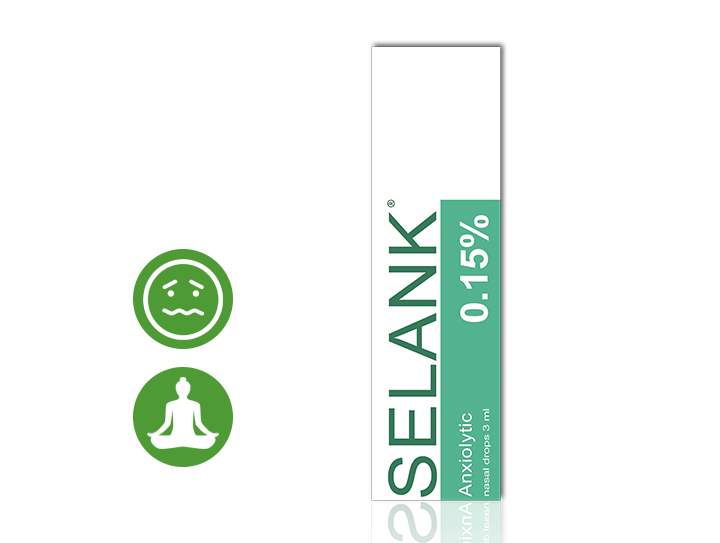How to Support Nervous System? Anti-Anxiety Nootropics
September 7, 2023
Anxiety, a feeling of inner tension, sleep disturbances, irritability, overreaction… Sounds familiar? In the XXI century these disorders are very common. The tense rhythm of life, low stress resistance, work under time pressure, and excess of information inflow add up to our restness. Therefore, adequate therapy including treatment with anti-anxiety nootropics, or anxiolytics, is of great social importance.

NOOTROPICS: WHAT ARE THOSE?
For more than a quarter of a century, the so-called nootropic drugs have been used in medical practice. These substances have an effect on the main neurotransmitter systems and the metabolism of brain neurons. They improve memory, have a neuroprotective effect, and increase the resistance of the central nervous system to damaging influences.
The term “nootropics” (Greek noos – “mind, thinking”; tropes – “aspiration”) was coined by the Belgian scientist K. Giurgea in 1972 to designate a class of drugs that have a positive effect on the higher integrative functions of the brain.
The most famous drug of this group is Piracetam, which has been synthesized to alleviate memory disorders and improve cognitive function. Later, it was found that it increases mental performance, but is devoid of the inherent side effects of psychostimulants such as the development of dependence, tolerance, withdrawal syndrome, etc.
Due to the wide spectrum of therapeutic activity and extremely low toxicity, nootropics have become very widespread in various fields of medicine. Statistical studies have shown that nootropics are taken by a third of the adult population of Europe and Japan. In this connection, some authors believe that they can reasonably be attributed to the group of vital drugs [8].
CAN ANTI-ANXIETY NOOTROPICS HELP TO FIND CALM?
Anti-anxiety nootropics are one way of helping oneself through the stress of every-day life. Although initially nootropics were mainly used mainly to treat cerebral dysfunctions in elderly patients with organic brain syndrome, in recent years they have become widely used in various fields of medicine, including neurology, psychiatry, and narcology [2].
Anxiolytics can be of help if you suffer from:
- various forms of neuroses (neurasthenia),
- psychosomatic pathology,
- climacteric syndrome,
- anxiety caused by age-related changes in the brain,
- chronic stress.
Of course, aggravated anxiety disorders represent a separate group of nosological forms, the treatment of which is in the competence of psychiatrists. And it shall include various psychotropic drugs, mainly antidepressants and, to a lesser extent, tranquilizers.
Anti-anxiety nootropics have been extensively used in Russia and former Soviet countries for many years. They passed all three stages of clinical trials. Therefore they can be used for the treatment of such problems as irritability, nervousness, social anxiety, insomnia, restlessness, anger, etc.
WHICH ANXIOLYTICS CAN I TAKE?
We would like to point out several categories of anxiolytics in the group of anti-anxiety nootropics:
- The safest ones would be Selank and Afobazole which are rather mild;
- Somewhat stronger products are Phenibut, Picamilon, Grandaxin and Stresam;
- For those, who prefer natural ways of regaining internal peace, it might be worth looking at herbal anti-anxiety supplements such as Motherwort.
It is important to remember that neurological disorders are a complex syndrome caused by disorders of neurochemical processes in the brain. They require a consultation with a specialist before using any specific medical means of correcting these changes.
CAN ANXIOLYTICS CAUSE DROWSINESS?
During the treatment with most anxiolytics it is recommended to take caution when driving a car or carrying out potentially dangerous activities that require increased concentration of attention and quick psychomotor reactions.
However, some anti-anxiety nootropics as Tenoten, Selank, or Intellan are suitable for administration during the daytime. They have shown no drowsiness or adverse effect on the speed of reaction. On the contrary, besides their ability to maintain the emotional state they are also known to improve memory and attention and make you active and efficient throughout the day.
CONCLUSION
To sum up anti-anxiety nootropics are an indisputable achievement of the modern pharmacology. Due to their unique structure, high efficiency and versatile action they can reasonably be regarded as promising means of pathogenetic therapy of condition related to various deteriorations of the nervous system.
However one shall bear in mind that safe nootropic pharmacotherapy implies the following:
- Only a physician is qualified to make a decision on the necessity of prescribing a particular medical preparation to a patient;
- The choice of an appropriate medication shall be made based on correct diagnosis, medical history, the presence of concomitant pathology as well as the knowledge of other preparations in the stack;
- Understanding that even though most anxiolytic nootropics are relatively safe they still pose a risk of side effects. If that is the case one need to be ready to replace the drug or cancel the treatment, as well as to carry out a set of measures to minimize the consequences of the mentioned effects.
Only the responsible attitude to one’s health can assure that the treatment will be effective and safe.
________________
Bibliography
- Selye H (1974). Stress Without Distress. https://www.amazon.com/Stress-Without-Distress-Hans-Selye/dp/0397010265
- Kovalev GV (1990). Nootropic preparations. https://www.ozon.ru/product/nootropnye-sredstva-kovalev-gennadiy-vasilevich-218589149/?stat=YW5fMQ%3D%3D
- Mosolov SN (1998). Contemporary trends in the development of psychopharmacotherapy. https://pubmed.ncbi.nlm.nih.gov/9634727/
- Krasucki C, Howard R, Mann A (1999). Anxiety and its treatment in the elderly. https://pubmed.ncbi.nlm.nih.gov/10189597/
- Ekman P. (2003). Emotions Revealed: Recognizing Faces and Feelings to Improve Communication and Emotional Life. https://www.paulekman.com/resources/books/
- Akhapkina VI, Voronina TA (2005). The Spectrum of pharmacological effects of Phenotropil. https://medi.ru/info/6293/
- Krasnova VV, Kholmogorova AB (2013). Social anxiety and suicidal behaviour in students. https://pubmed.ncbi.nlm.nih.gov/23739441/
- Torshin IY et al (2018). Experience with mexidol in neurological practice. https://pubmed.ncbi.nlm.nih.gov/30499505/
- Mosolov SN (2020). Problems of mental health in the situation of COVID-19 pandemic. https://pubmed.ncbi.nlm.nih.gov/32621462/
- Chukanova EI et al (2021). The efficacy of antioxidant treatment with mexidol forte in 250 patients with chronic cerebral venous insufficiency. https://pubmed.ncbi.nlm.nih.gov/33834719/
___________________
Disclaimer
This article is intended for informational purposes only. All medical preparations must be taken upon the doctor’s advice and under medical supervision.

